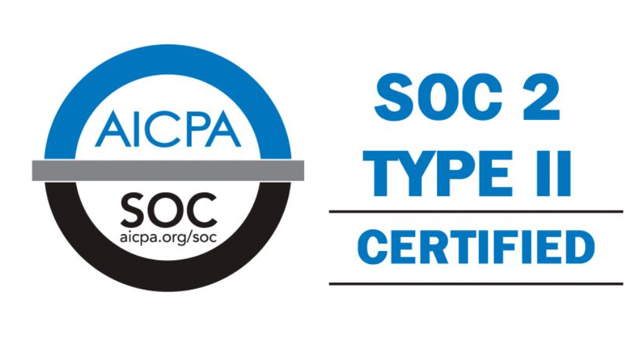
From 100 to 1 million Transfers: Scaling MFT for Enterprise Growth
From 100 to 1 million Transfers: Scaling MFT for Enterprise Growth Ever wondered what happens when your daily file transfers multiply by
As more critical business information is digitized, you’re spending more time than ever managing that information and its movement within your enterprise and with your partners and customers.
Can your file transfer infrastructure handle the implications of different data privacy regulations? Is your network and the data that travels across it secure enough? Can your file transfer operations process the rapidly increasing volumes of digital data across disparate systems, platforms and protocols? How effectively does your file transfer infrastructure enable you to meet and proactively manage service level agreements (SLAs)?
Leading businesses have discovered that ensuring compliance, enabling successful, secure data transfers and managing high volumes of data to meet SLAs all have one thing in common: data must be visible across the organization. After all, you have to know where the data is, and how it got there, to effectively manage it.
When you apply this key learning, and the three others described in this paper, to effectively manage and monitor the flow of business data, you can dramatically improve the security, auditability, service delivery and scalability of your file transfer operations to deliver on the promise of exceptional customer experiences.
In today’s business environment, how we deliver is as important as what we deliver. Increasing regulations, like BCBS 239 and HIPAA, require auditing and visibility of file transfers – and the cost of non-compliance is high. In addition, ever demanding SLAs can have a dramatic impact on both business performance and the customer experience.
To deliver on changing customer and market demands, you need visibility into your data from the beginning of a file transfer to the very end. After all, you can’t manage what you can’t see. A secure file transfer system that moves data quickly and reliably from one application or server to another allows you to comply with increasingly stringent information-security requirements and proactively manage service.
You also need to effectively monitor B2B processes. Look for solutions that align server views with operational logic and identify schedules, processes, file names, user roles and security capabilities.
Many companies move data via File Transfer Protocol (FTP). For those companies, FTP may even be the standard file transfer solution. But using FTP puts data and the network it travels across at risk.
For example, with FTP, client IDs and passwords are transmitted in clear text. Worse, standard FTP commands can be used to create denial-of-service attacks or exploit other network vulnerabilities. Security risks aside, FTP is difficult to manage because it provides no way for you to see where your critical data is, let alone control its movement or generate an audit trail. Sometimes, in fact, data sent via FTP never reaches its destination, and the sender only knows if the intended recipient manually notifies the sender.
To improve the security of your data and network – and simplify management – it’s important to reduce or even eliminate ad hoc use of FTP. Replacing FTP with a standardized platform for secure file transfer enables you to set and enforce security policies throughout your company and with others outside your organization.
FTP is difficult to manage because it provides no way for you to see where your critical data is, let alone control its movement or generate an audit trail.
The volume of data that companies transfer is growing exponentially. That’s because more types of information are being digitized and more companies are expanding trading partner networks. Can your file transfer infrastructure accommodate the growing volume of data?
Banks in the United States are now digitizing checks so that they can be processed faster and more efficiently. If your company is involved in an acquisition or merger, or if your trading partner network is expanding as part of the company’s growth strategy, your data volume is growing exponentially too. Trade secrets, such as data-filled documents with product specifications or manufacturing design, move frequently across global supply chains and must also be secured.
A secure file transfer system that easily scales to the size of your needs and accommodates multiple platforms and protocols helps ensure your ability to handle increasing volumes of data.
Time is money. And nothing underscores that more dramatically than the need to quickly process customers’ data. Because you have SLAs to meet, you must carefully monitor data transfers from beginning to end – for events and non-events. Can you rely on your file transfer infrastructure to help you manage to service commitments?
A secure file transfer solution enables you to see the data movement in your network. With real-time visibility, you gain more focused insight for resource planning, because the system pinpoints process bottlenecks. It highlights unreliable or inefficient file transfer solutions that need upgrading or replacing. It enables you to customize alerts based on SLAs and to define rules for exception handling. And perhaps most importantly, it enables you to proactively resolve issues before they become failures – ensuring that you meet service commitments.
The only way your file transfer infrastructure can meet your evolving business demands is if it lets you see data everywhere in the network.
Is your file transfer infrastructure equipped to meet today’s business demands? The answer lies in its ability to let you see data everywhere in the network. Because your organization’s business processes reach across a vast network within and beyond your four walls, data sharing plays an integral role in your company’s success. Existing enterprise applications, like enterprise resource planning and departmental FTP servers, enable these processes.
It’s important to evaluate the impact – and the cost – that un- managed file transfers place on your business. Begin by answering these questions:
Browse Categories
Share Blog Post
Source: IBM
Jim Luneke

From 100 to 1 million Transfers: Scaling MFT for Enterprise Growth Ever wondered what happens when your daily file transfers multiply by

In today’s fast-paced world of data analytics and AI, optimizing your data infrastructure is key to unlocking valuable insights and driving innovation.

In today’s fast-paced world of data analytics and AI, optimizing your data infrastructure is key to unlocking valuable insights and driving innovation.
We are a forward-thinking technology services provider dedicated to driving innovation and transformation across industries.


| Cookie | Duration | Description |
|---|---|---|
| cookielawinfo-checkbox-analytics | 11 months | This cookie is set by GDPR Cookie Consent plugin. The cookie is used to store the user consent for the cookies in the category "Analytics". |
| cookielawinfo-checkbox-functional | 11 months | The cookie is set by GDPR cookie consent to record the user consent for the cookies in the category "Functional". |
| cookielawinfo-checkbox-necessary | 11 months | This cookie is set by GDPR Cookie Consent plugin. The cookies is used to store the user consent for the cookies in the category "Necessary". |
| cookielawinfo-checkbox-others | 11 months | This cookie is set by GDPR Cookie Consent plugin. The cookie is used to store the user consent for the cookies in the category "Other. |
| cookielawinfo-checkbox-performance | 11 months | This cookie is set by GDPR Cookie Consent plugin. The cookie is used to store the user consent for the cookies in the category "Performance". |
| viewed_cookie_policy | 11 months | The cookie is set by the GDPR Cookie Consent plugin and is used to store whether or not user has consented to the use of cookies. It does not store any personal data. |
Thank you for submitting your details.
For more information, Download the PDF.
Thank you for registering for the conference ! Our team will confirm your registration shortly.
Invite and share the event with your colleagues
IBM Partner Engagement Manager Standard is the right solution
addressing the following business challenges
IBM Partner Engagement Manager Standard is the right solution
addressing the following business challenges
IBM Partner Engagement Manager Standard is the right solution
addressing the following business challenges